Biophysics
- The ribosome lowers the entropic penalty of protein folding - Naturewww.nature.com The ribosome lowers the entropic penalty of protein folding - Nature
Structures of the growing peptide chain on and off the ribosome reveal that the ribosome destabilizes the unfolded nascent chain, promoting the formation of partially folded intermediate states.
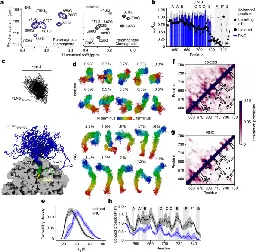
- Ca2+ transients on the T cell surface trigger rapid integrin activation in a timescale of seconds - Nature Communicationswww.nature.com Ca2+ transients on the T cell surface trigger rapid integrin activation in a timescale of seconds - Nature Communications
Lymphocytes need to be slowed down rapidly to enter tissues. Here the authors characterise the arrest of lymphocytes and using a calcium biosensor propose that a rapid drop in extracellular calcium concentration results in integrin activation and lymphocyte arrest.
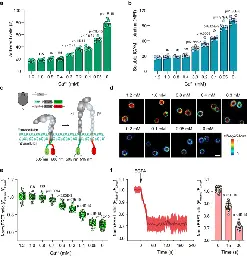
- The structural insight into the functional modulation of human anion exchanger 3 - Nature Communicationswww.nature.com The structural insight into the functional modulation of human anion exchanger 3 - Nature Communications
This study provides structural insights into human AE3’s role in pH regulation in excitable tissues, highlighting its structural differences from AE2 in anion transport regulation and their sensitivity to inhibitors.
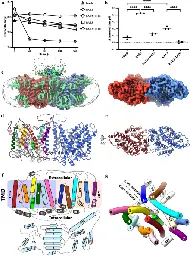
- A synthetic antibiotic class with a deeply-optimized design for overcoming bacterial resistance - Nature Communicationswww.nature.com A synthetic antibiotic class with a deeply-optimized design for overcoming bacterial resistance - Nature Communications
Authors present the in vivo assessment of a compound, F8, from a synthetic antibiotic class, showing efficacy against antibiotic resistance bacteria and insight into its mechanism of action.
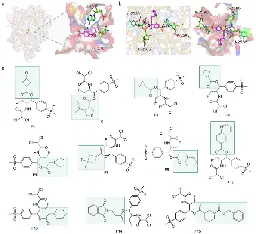
- The mechanism for directional hearing in fish - Naturewww.nature.com The mechanism for directional hearing in fish - Nature
A study demonstrates that the fish Danionella cerebrum is able to discriminate the direction of sound by comparing the relative phase of pressure and particle motion.
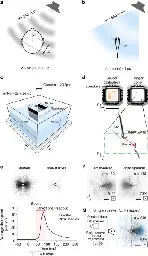
- Directed ultrafast conformational changes accompany electron transfer in a photolyase as resolved by serial crystallography - Nature Chemistrywww.nature.com Directed ultrafast conformational changes accompany electron transfer in a photolyase as resolved by serial crystallography - Nature Chemistry
Photoinduced electron transfer forms the basis for photosynthesis and DNA repair. Ultrafast structural changes recorded for a DNA-repairing photolyase now reveal specific and directed protein motions accompanying the electron transfer.
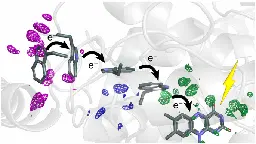
- Wi-Fi harms bees according to 72 studiesbgr.com Smartphones and Wi-Fi are killing vital insects
An analysis of over 80 studies shows a direct link between mobile phone and Wi-Fi radiation and declining insect populations. Radiation can affect insects at …

cross-posted from: https://sopuli.xyz/post/7625705
> According to the linked article, 72 studies suggest that wi-fi radiation harms/kills #bees -- and by some claims is a threat to their continued existence. I suppose if extinction were really a likely risk there would be widespread outrage and bee conservationists taking actions. It seems there is a lack of chatter about this. This thread also somewhat implies disinterest in even having wi-fi alternatives. > > In any case, does anyone think this is a battle worth fighting? Some possible off-the-cuff actions that come to mind: > * ban the sale of wi-fi devices bigger than a phone in Europe¹ if they do not also comply with these conditions: > * include an ethernet port as well. So e.g. macbooks would either have to bring back the ethernet port or nix wi-fi (and obviously Apple wouldn’t nix Wi-Fi). > * have a physical wi-fi toggle switch on the chassis (like Thinkpads have) > * force public libraries with Wi-Fi to give an ethernet port option so library users at least have the option of turning off their own wi-fi emissions. > * ban the sale of Wi-Fi APs that do not have: > * a configurable variable power setting that is easily tunable by the user; maybe even require a knob or slider on the chassis. > * bluetooth that is internet-capable > * force phones that include wi-fi to also include bluetooth as well as the programming to use bluetooth for internet. Bluetooth routers have existed for over a decade but they are quite rare.. cannot be found in a common electronics shop. > > Regarding bluetooth, it is much slower than wi-fi, lower range, and probably harder to secure. But nonetheless people should have this option for situations where they don’t need wi-fi capability. E.g. when a phone is just sitting idle it could turn off wi-fi and listen over bluetooth for notifications. > > I suspect the 1st part of this quote from the article explains the lack of concern: > > “The subject is uncomfortable for many of us because it interferes with our daily habits and there are powerful economic interests behind mobile communication technology.” > > 1. I say /Europe/ because it’s perhaps the only place where enough people would be concerned and where you also have the greatest chance of passing pro-humanity legislation (no “Citizens United” that human needs have to compete with).
- Have you ever dumped a job rght after youve been hired?
Hey, so I just fu***g quit my new job rn. I got offered something better last minute but didn’t wanna be a dick and cancel on them at the last minute, so I went through with it anyways and then QUIT RIGHT AFTER THEY HIRED ME LMFAO. It felt so good man, total payback for all those times i wasted my time interviewing only to never get the gig.
- RNA Nanoparticle Therapy Stops the Spread of Incurable Bone Marrow Cancer, Study Findsmedicalxpress.com RNA nanoparticle therapy stops the spread of incurable bone marrow cancer, study finds
Multiple myeloma is an incurable bone marrow cancer that kills over 100,000 people every year. Known for its quick and deadly spread, this disease is one of the most challenging to address. As these cancer cells move through different parts of the body, they mutate, outpacing possible treatments. Pe...

This article describes using lipid nanoparticles (LNPs) containing silencing RNA (siRNA) to slow or prevent the spread of cancerous multiple myeloma cells through the body.
What I found interesting about this approach is that these LNPs do not target the cancerous cells themselves, but rather targets healthy endothelial cells lining blood vessels in the body. The mechanism of action is to reduce the expression of a protein (CyPA) that cancer cells use to aid their spread through the body. So, these LNPs are simply used to help contain and localize the cancerous growth while traditional cancer treatments are used to treat the malignant cells.
A significant challenge for this approach going forward is tuning the targeting and biodistribution of the LNPs. Most LNP treatments end up in either the liver or spleen where they transfect cells in those organs and express protiens. I don't have direct experience with siRNA molecules, but transfecting epithelial cells in a lasting way could prove difficult as it scales up from mouse models.
- Biodegradable, Implantable Ultrasound Device Helps Open the Blood-Brain Barrier to Help Medicine Reach the Brainmedicalxpress.com Biodegradable ultrasound opens the blood-brain barrier
A new, biodegradable ultrasound far more powerful than previous devices could make brain cancers more treatable, University of Connecticut researchers report in the June 14 issue of Science Advances.
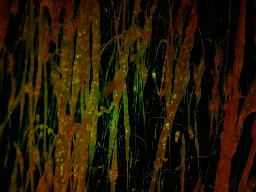
Getting therapeutics to cross the blood-brain barrier is one of the biggest hurdles to many investigational neuroscience macromolecules. This approach of using a proven mechanism of action (ultrasound) in a device that is easily implantable and does not need to later be removed looks promising.
- ‘Breakthrough’ could explain why life molecules are left- or right-handed
Some recent evidence points to the Earth's magnetic field playing a part in preferentially selecting right-handed chirality in RNA precursors. This work is not complete though as not every nucleotide can be made from this process yet, but it is so far, the best explanation available as to why genetic material and amino acids are exclusively R and L (respectively) oriented.


